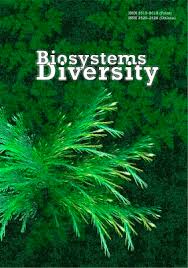Morphological variation of four species of Strongyloides (Nematoda, Rhabditida) parasitising various mammal species
Morphological variation of four species of Strongyloides (Nematoda, Rhabditida)
parasitising various mammal species
Author(s): Y.A. Gugosyan, O. O. Boyko, V. V. BrygadyrenkoSubject(s): Evaluation research, Sociobiology
Published by: Дніпропетровський національний університет імені Олеся Гончара
Keywords: morphometric parameters; Strongyloides papillosus; S. westeri; S. ransomi; S. stercoralis;
Summary/Abstract: Study of the morphologic peculiarities of free-living stages of nematodes of the Strongyloides genus is important in differential diagnostics of pathogens. We studied the parasite of goats (Capra aegagrus hircus Linnaeus, 1758) – Strongyloides papillosus (Wedl, 1856); the parasite of horses (Equus ferus caballus Linnaeus, 1758) – S. westeri Ihle, 1917; the parasite of swine (Sus scrofa Linnaeus, 1758 ) – S. ransomi Schwartz & Alicata, 1930; the parasite of dogs (Canis lupus familiaris Linnaeus, 1758) – S. stercoralis (Bavay, 1876). Rhabditiform larvae (L1, L2), filarial larvae (L3), mature males (M) and free-living females (F) were analyzed for each of the four species by five morphological parameters: body length (Lb), total maximum body width (Sb), length of the esophagus (Lo), length of the intestine (Le), length of the tail end (Lc); for females, we additionally examined length from the head end to the vulva (Lv) and the number of formed eggs in the uterus cavity (E), and for males – length of spicules (Ls). First stage larvae of S. papillosus and S. stercoralis significantly differed in all parameters, and first stage larvae of S. westeri and S. stercoralis significantly differed in four out of five parameters.
Journal: Biosystems Diversity
- Issue Year: 27/2019
- Issue No: 1
- Page Range: 85-98
- Page Count: 14
- Language: English

